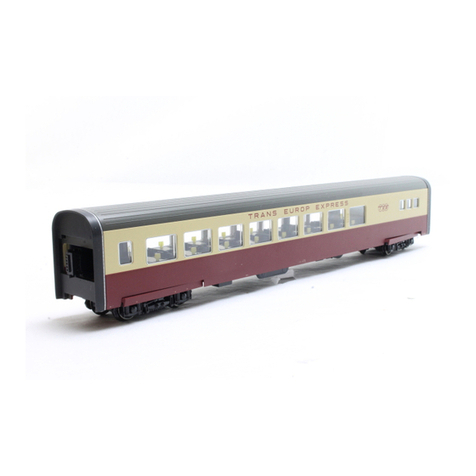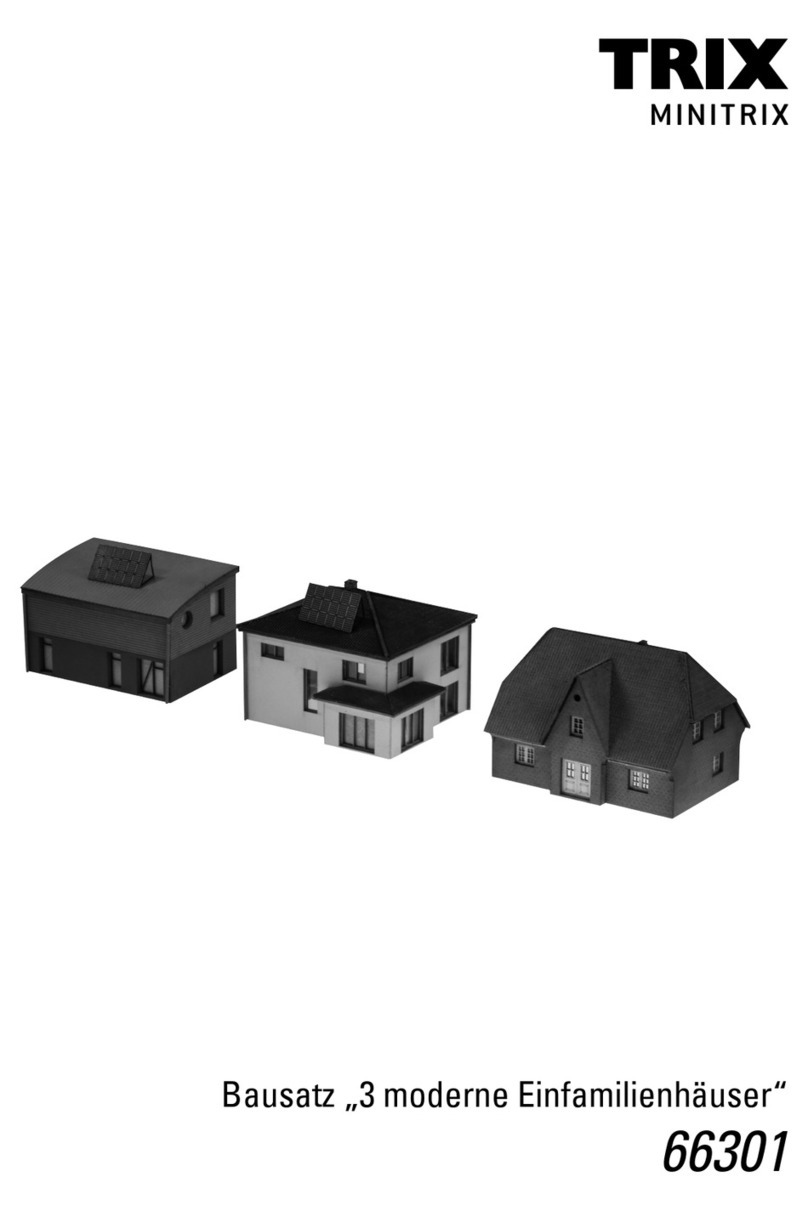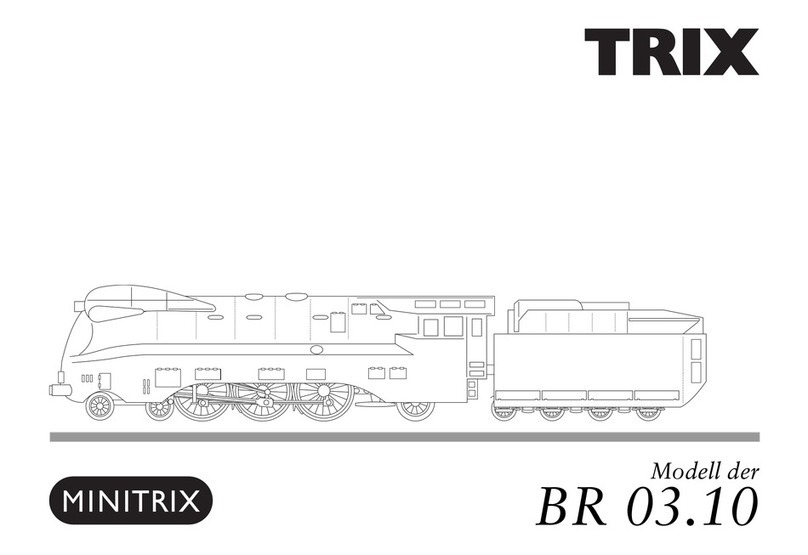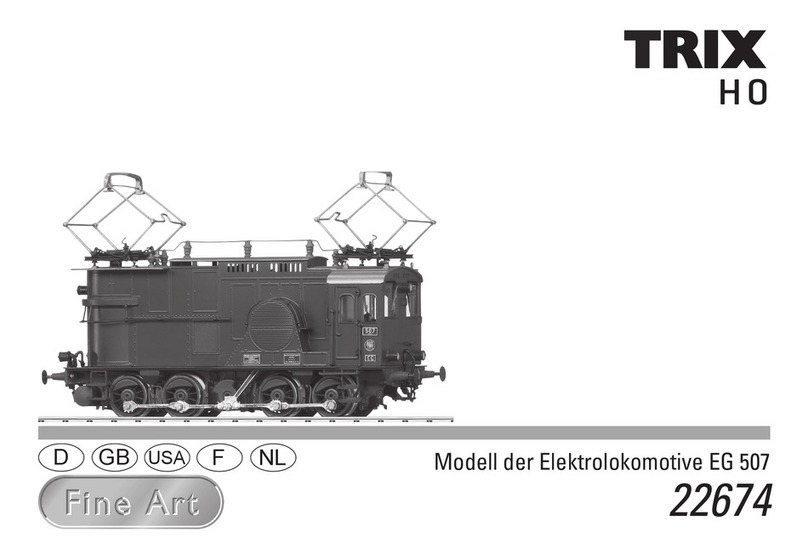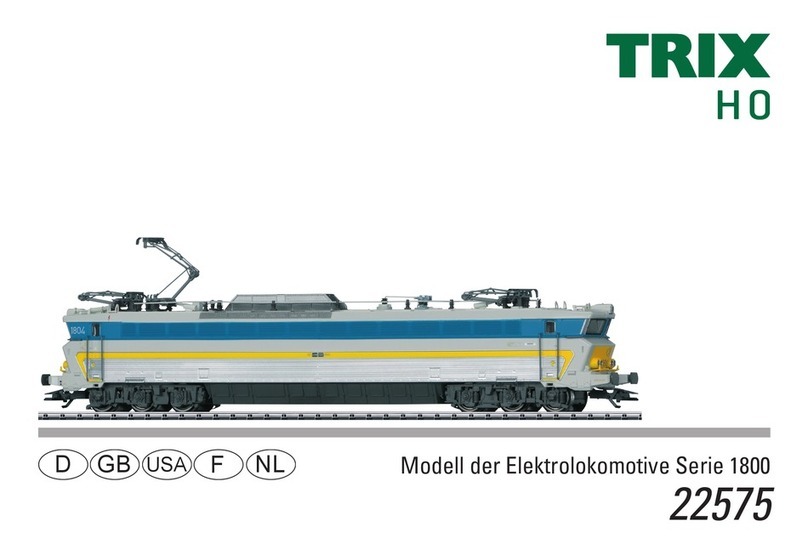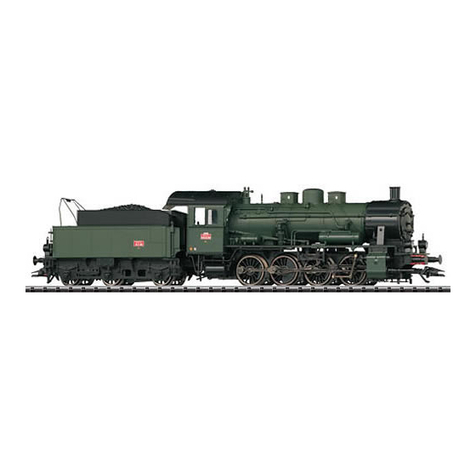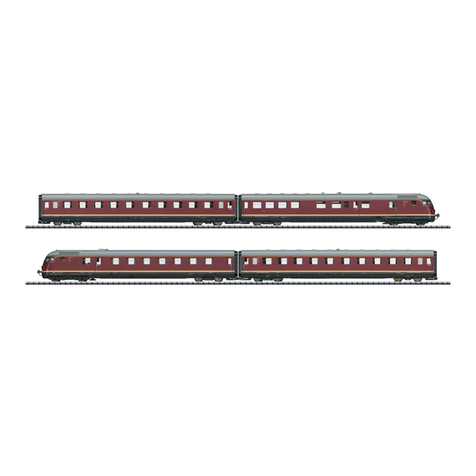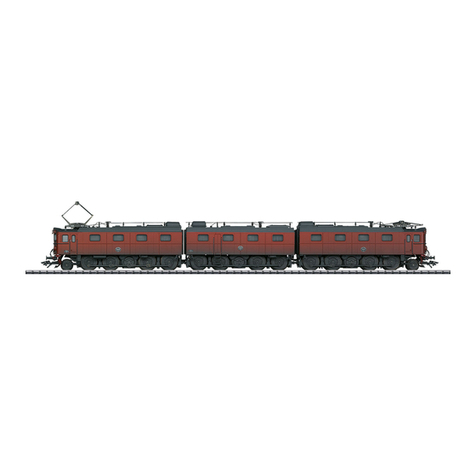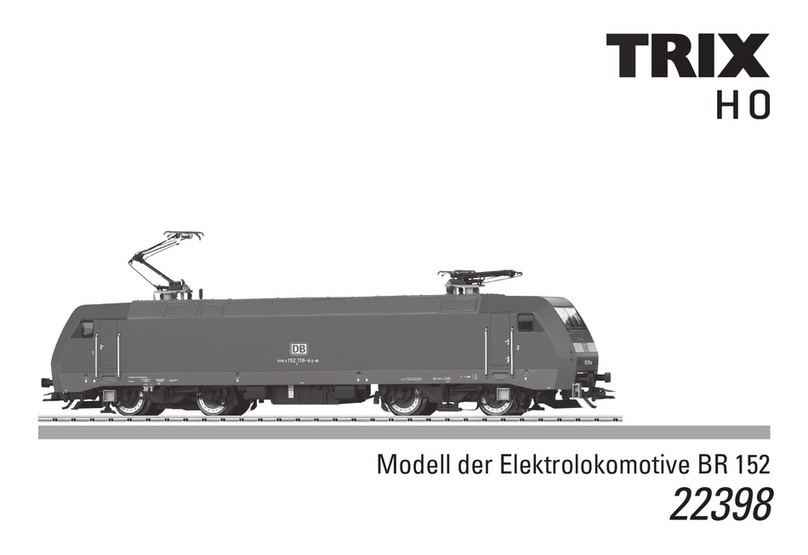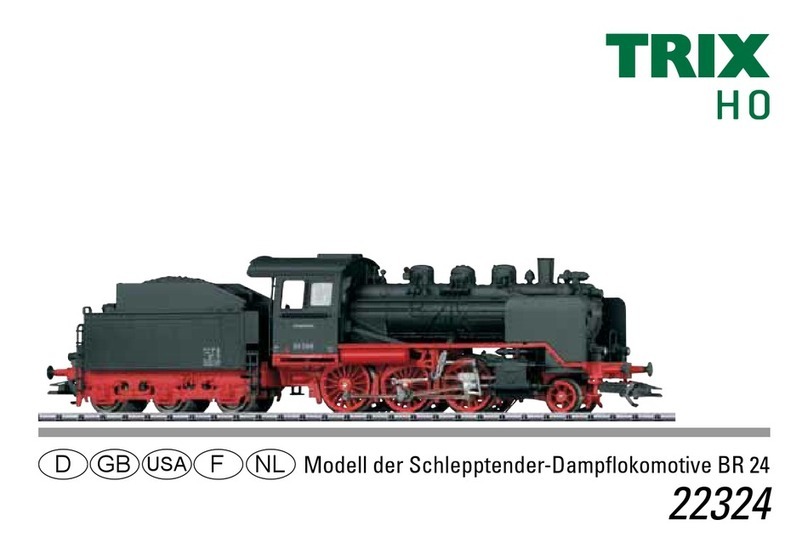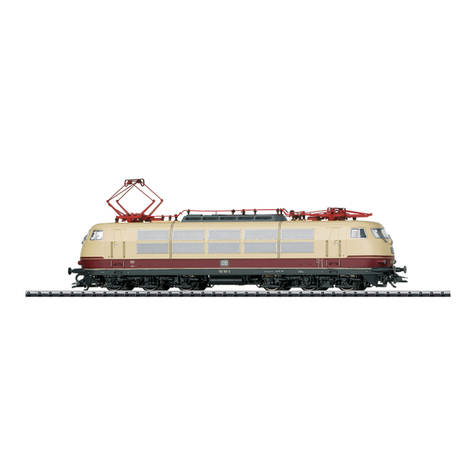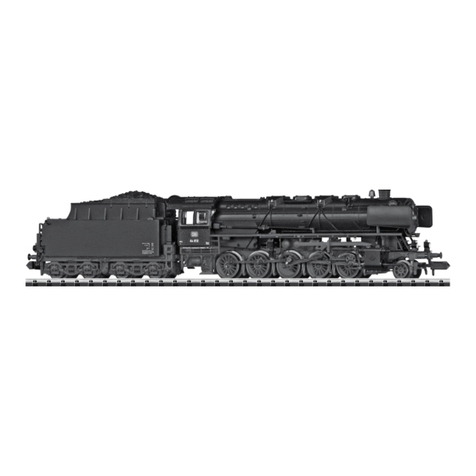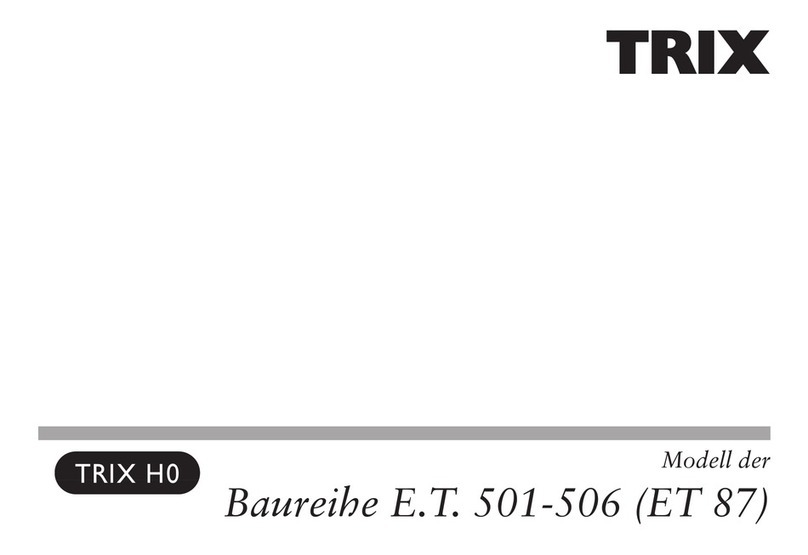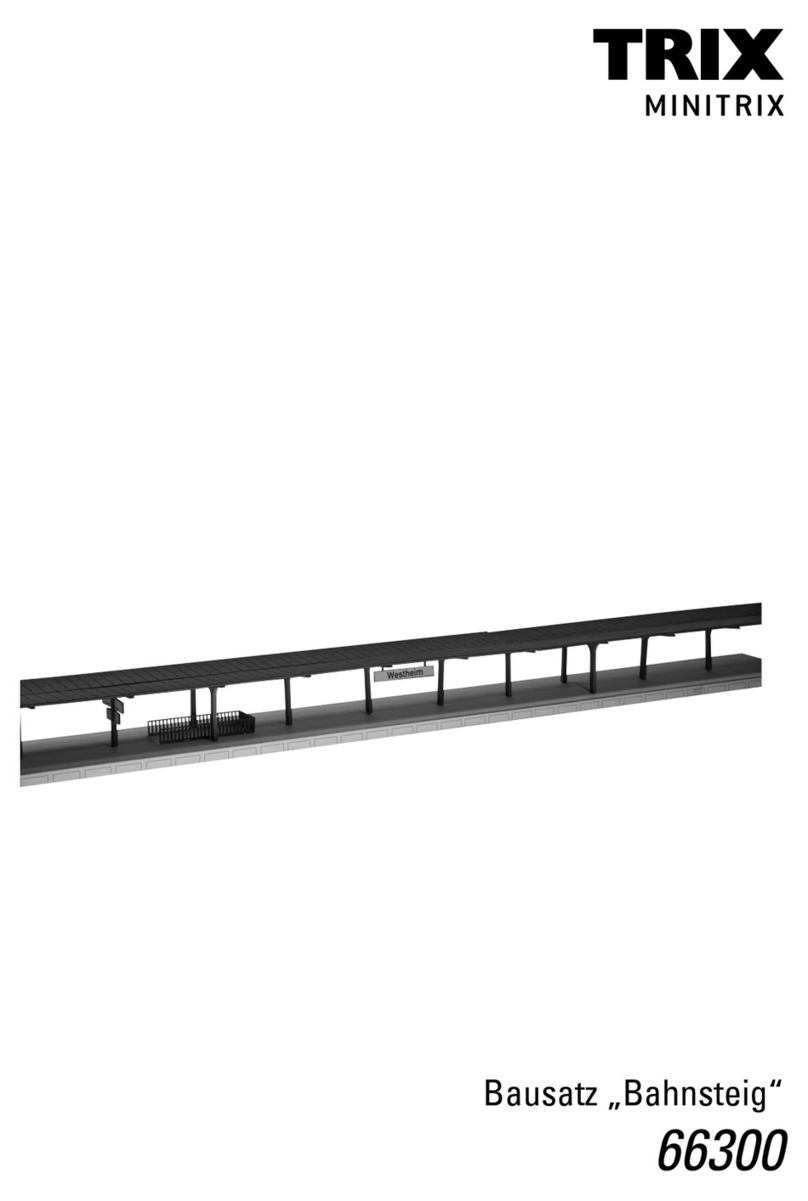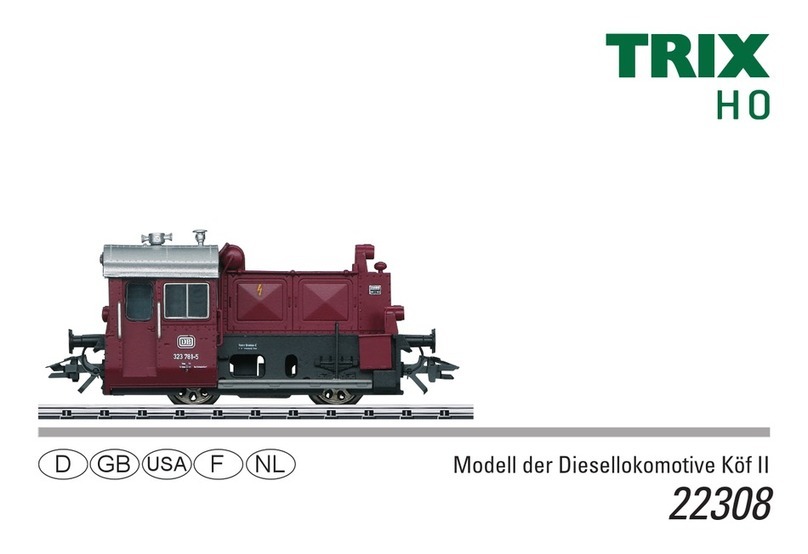5
Information about the prototype
At the start of the 1950’s the demand for transport had
increased to such a point that the Swiss Federal Railways
(SBB) were compelled to develope a new type of loco-
motive. The new locomotive was designed to be more
powerful, faster and lighter in weight. The result was the
class Ae 6/6 which was the main source of motive power
for years on the Gotthard route.
The six-axle locomotive (Co’Co’) had an output of
4400 kilowatts (6000 hp) and a top speed of 125 km/h
(approx. 78 m.p.h.); it was capable of pulling a 770 ton
train over the Gotthard Pass. This resulted in consider-
ably shorter schedule times and savings, for prevoiously
all trains had to be operated with double headed motive
power.
All total, 120 units of this powerful locomotive were built,
and they left their mark on freight traffic on the Gotthard
route well into the 1970’s. The coats-of-arms for Swiss
cantons were put on the first 25 units, and the coats-of-
arms for sponsoring Swiss citis were put on the rest.
Informations concernant le modèle réel
Au début des années 1950, les puissances de traction
nécessaires étaient devenues tellement importantes que les
Chemins de Fer Fédéraux suisses (CFF/SBB/FFS) s’étaient
vus contraints de développer un nouveau type de locomo-
tive. La nouvelle locomotive devait être plus puissante, plus
rapide et surtout plus légère. C’est aisni que naquit la
série Ae 6/6 qui assura pendant de longues années l’essen-
tiel des services de traction sur le Gotthard.
Cette locomotive à six essieux (Co’Co’) d’une puissance de
4400 kW (6000 CV) avec une vitesse maximum de 125 km/h
était capable de faire franchir le Saint Gotthard à un train
de 770 t de masse totale. Ceci se traduisit par des gains
de temps importants et des économies, car les tractions
devaient auparavant être assurées en double traction.
Au total, ce furent 120 unités de cette locomotive puissante
qui furent construites, marquant de leur image le trafic
marchandises sur la ligne du Saint Gotthard jusqu’aux
années soixante-dix. Les 25 premières machines ont reçu
des blasons de contons suisses, les suivantes des blasons
de villes de parrainage.
